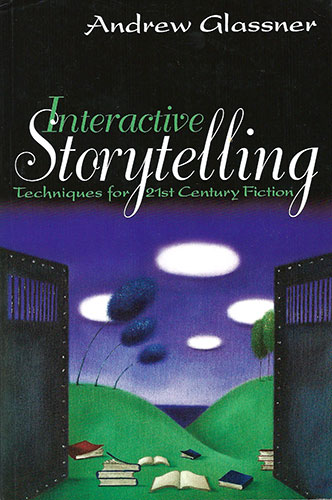Interactive Storytelling
 I strongly believe that we are on the verge of developing an exciting new kind of story form that will involve audience members as active participants.
I strongly believe that we are on the verge of developing an exciting new kind of story form that will involve audience members as active participants.
There is no shortage of books that start with a similar notion and speculate on what this new form of media might look like. There have been lots of theories and even some experiments, many in the form of imaginative video games. I feel like enough things have been tried, and they’ve been tried well and repeatedly, that we can start to draw some lessons from the successes and failures. If we can figure out why some projects have resonated with their audiences, and others haven’t, we’ll be a little closer to being able to improve our designs in the future.
When I was working at The Microsoft Network, I was directing a highly interactive online game called Dead Air, and I had several other projects working their way through the pitch process. They all involved some blend of meaningful audience participation, or interaction, and fiction. As I worked on these games I tried to leverage the best of what had been done before, and avoid what I thought was problematic. As I tried to work out what we’d learned about online and interactive fiction, I realized that nobody had brought together all the various theories and projects out there, so we could see them all at once and work out a coherent picture. I decided to write a book to address this need.
The first part of the book is a discussion of traditional storytelling: its forms, its conventions, and its rules. The fundamental structure of Western fiction was beautifully described by Aristotle, and the core principles haven’t changed much since. Before we throw away or modify what’s worked so well for millennia, we should know what we’ve got and why it works.
The second part of the book surveys the popular types of interactive and experimental fiction that have appeared in the past few decades. We look at which ideas produced works that were popular, which ideas consistently led to unpopular works. We consider which ideas were short-lived novelties and which had staying power.
The book closes with a collection of ideas and projects that can serve as experiments to help us go forward.
Here’s the Table of Contents:
- Part I. Introduction
- 1. People, Stories, and Games
- Part II: Story Structure
- 2. Character
- 3. Plot
- 4. Story Technique
- Part III: Game Structure
- 5. Game Experience
- 6. Rules and Scoring
- 7. Gameplay
- Part IV: Merging Stories and Games
- 8. Structures
- 9. Branching and Hypertext
- 10. Common Pitfalls
- 11. First Steps
- Part V: Story Environments
- 12. Story Environments
- 13. Designing for Participation
- 14. Experiments
- Bibliography
- Index
Interactive Storytelling is available at your favorite online booksellers, such as Amazon.
